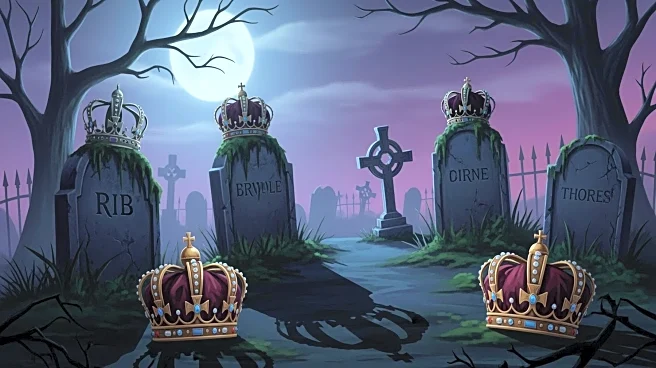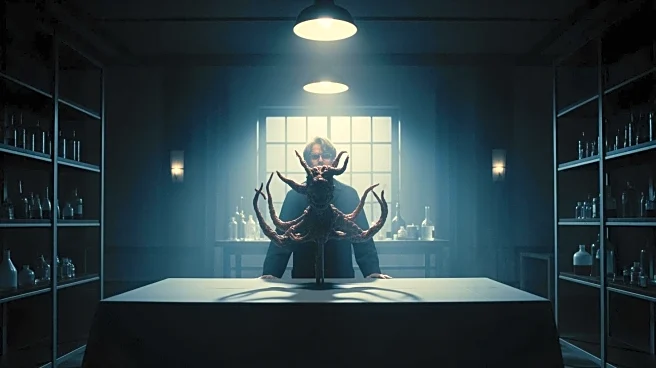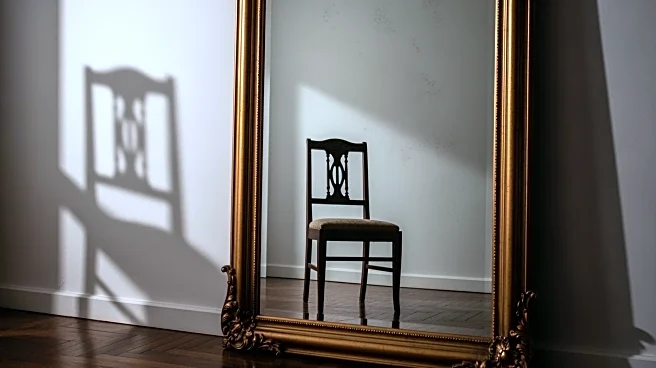What's Happening?
Tina Romero, daughter of the legendary horror filmmaker George Romero, has directed and co-written 'Queens of the Dead,' a film that reimagines the zombie genre through a queer lens. The movie is set in a converted Bushwick warehouse where a group of drag
queens and their allies face a zombie apocalypse. The film stars Katy O'Brian as Dre, a drag event organizer, and features a cameo by legendary makeup artist Tom Savini. The narrative explores themes of community and survival, with characters navigating personal and social challenges amidst the chaos. The film's editing, reminiscent of George Romero's style, adds to its appeal, making it accessible to a broader audience beyond just horror enthusiasts.
Why It's Important?
'Queens of the Dead' is significant as it brings diversity and inclusivity to the horror genre, traditionally dominated by heteronormative narratives. By foregrounding queer characters and themes, the film challenges conventional storytelling and offers representation to marginalized communities. This approach not only enriches the genre but also reflects broader societal shifts towards acceptance and visibility of LGBTQ+ identities. The film's social commentary on working together across differences resonates with current cultural dialogues about unity and acceptance, making it relevant to contemporary audiences.
What's Next?
The film's release could spark discussions about the role of horror in addressing social issues and the importance of diverse narratives in mainstream cinema. It may inspire other filmmakers to explore similar themes, potentially leading to more inclusive storytelling in the industry. Additionally, the film's reception could influence future projects by Tina Romero, establishing her as a prominent voice in both horror and queer cinema.
Beyond the Headlines
Beyond its immediate impact, 'Queens of the Dead' may contribute to long-term shifts in the horror genre, encouraging more films that blend entertainment with social commentary. The film's success could also highlight the commercial viability of diverse narratives, prompting studios to invest in projects that reflect a wider range of experiences and identities.













